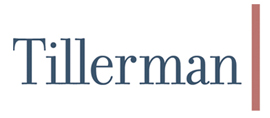Looking to elevate your business strategy and outshine the competition in your industry? Dive into our latest blog post where we unravel the secrets of deeply understanding your customer, effectively targeting market whitespace, keeping pace with trends, and building a robust data infrastructure.

To thrive in any industry, a solid plan is crucial. Let’s break down the key elements of our suggested strategy:
Understanding Your Customer and Competition
The first step in building a successful brand is deeply understanding your target customer. Identify their preferences, lifestyles, and pain points. This customer-centric approach will guide product development, marketing, and brand positioning. Equally important is understanding the competition. Analyzing their strengths and weaknesses will help identify opportunities for differentiation and competitive advantage.
Build Assortments to Target Whitespace
To stand out in the market, strategically build assortments that identify whitespace in both product offerings and pricing. This means identifying underrepresented product categories or styles in the market or those that strongly resonate with your target audience. Additionally, pricing products competitively while maintaining quality will be key to attracting and retaining customers.
Getting Behind Trends
Being trend conscious is essential. Instead of trying to appeal to everyone, focus on getting behind key trends that align with your brand identity and customer preferences. Embrace trends that resonate with your target audience, and you will stay relevant and attract a loyal customer base.
Build a Data Infrastructure
To support your understanding of the customer, competition, and market trends, a robust data infrastructure is needed. While limited resources may hinder the development of an in-house solution, consider outsourcing some aspects of the data infrastructure to ensure access to comprehensive and reliable data.
While data may seem overwhelming, it can be manageable if broken down. First, identify the key data points and insights that will drive decision-making. This could include customer demographics, buying behavior, sales performance, market trends, and competitor analysis.
To fill the gaps in internal capabilities, partner with expert data providers. These companies specialize in gathering and analyzing data relevant to the fashion industry, customer behavior, and market trends. This will provide valuable data without the need for extensive in-house resources.
Leverage cloud-based solutions for data storage and analysis, offering scalability and flexibility without the need for a large IT infrastructure. Cloud-based services can be cost-effective and allow remote data access. Ensure that outsourced data sources integrate seamlessly with internal systems to derive comprehensive insights and support effective decision-making processes.




